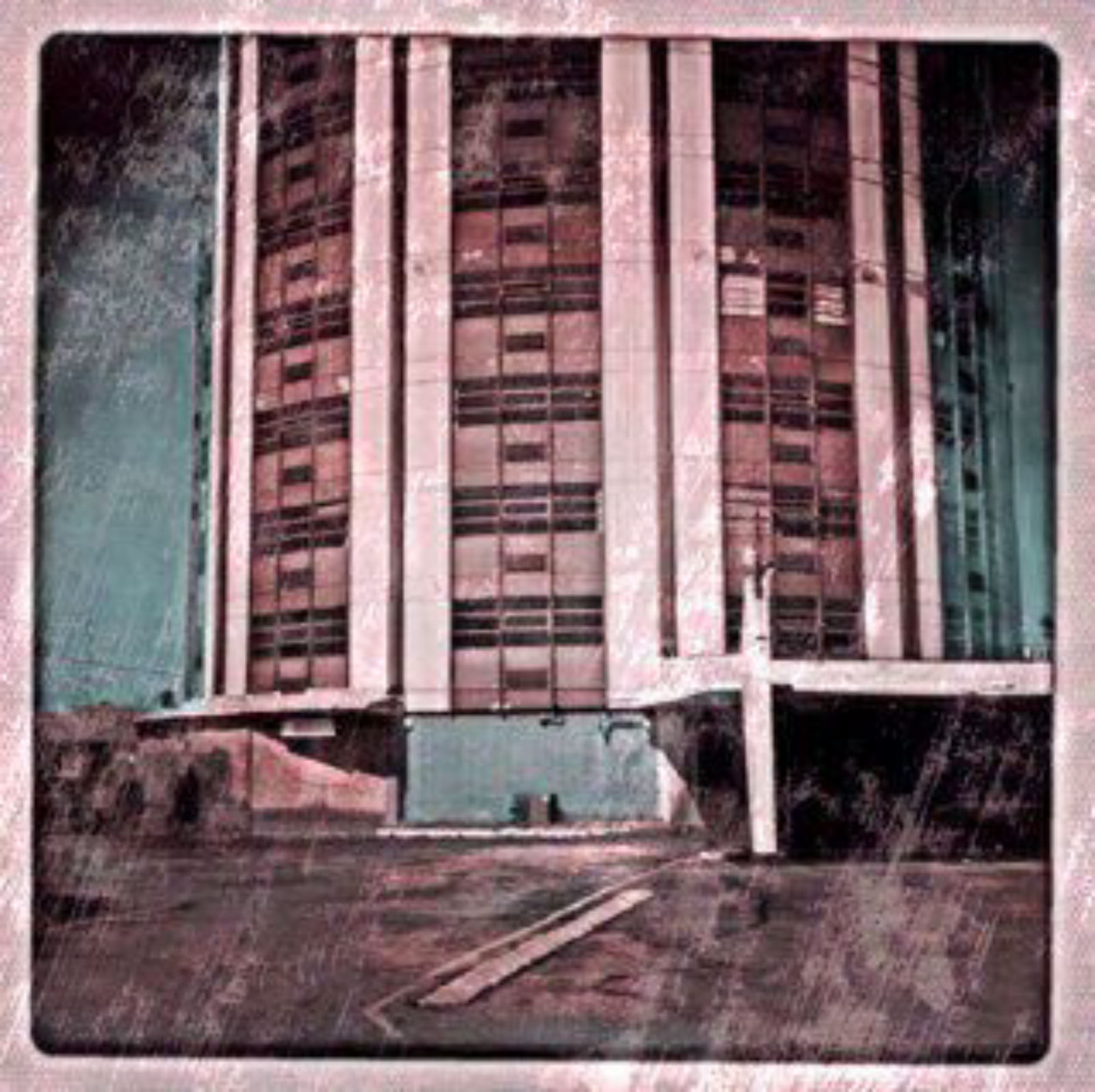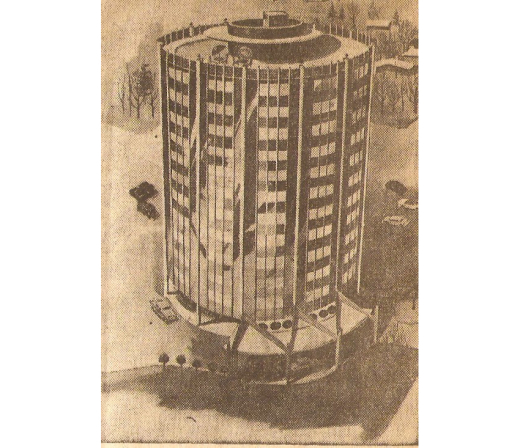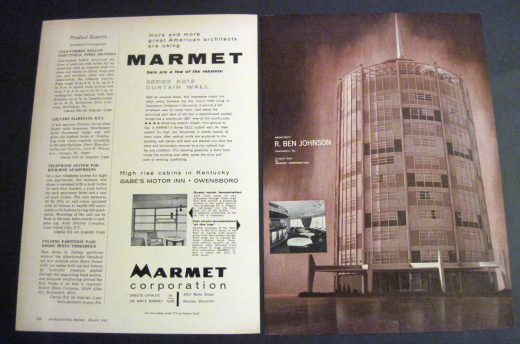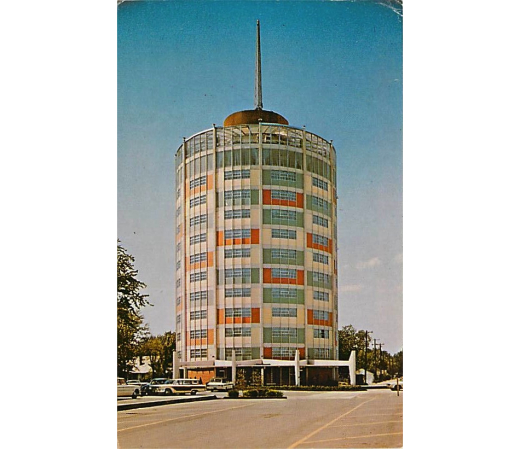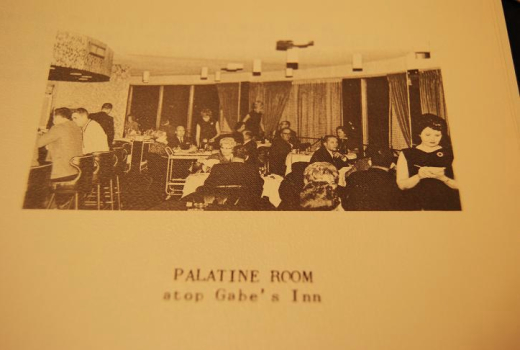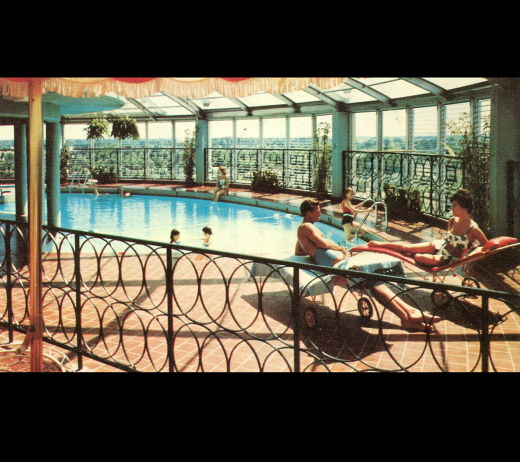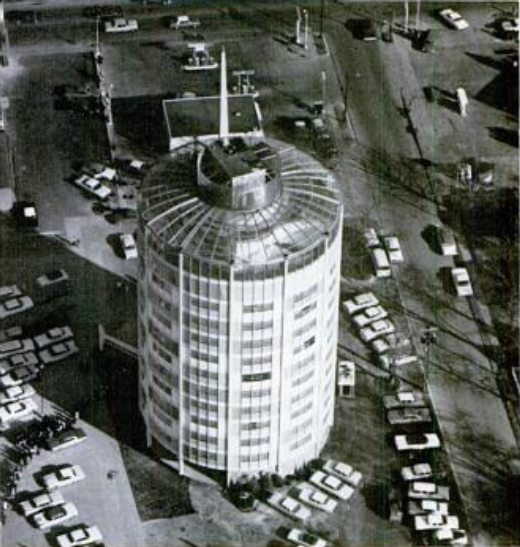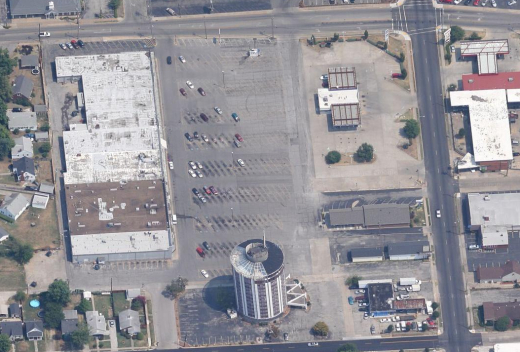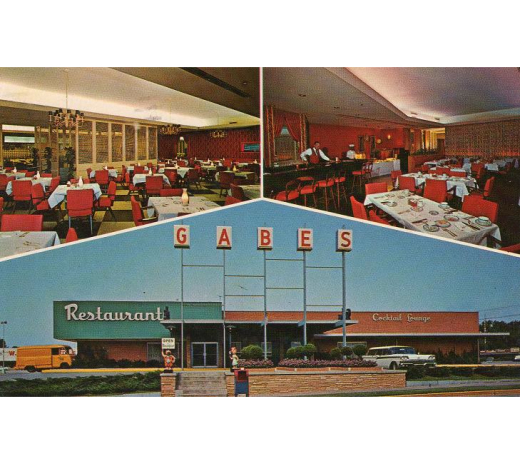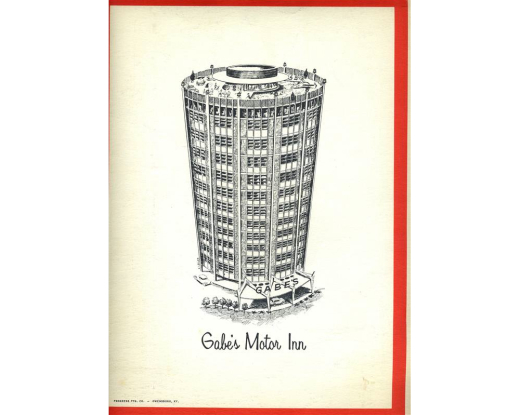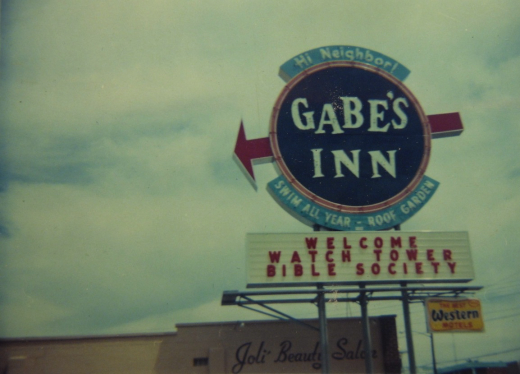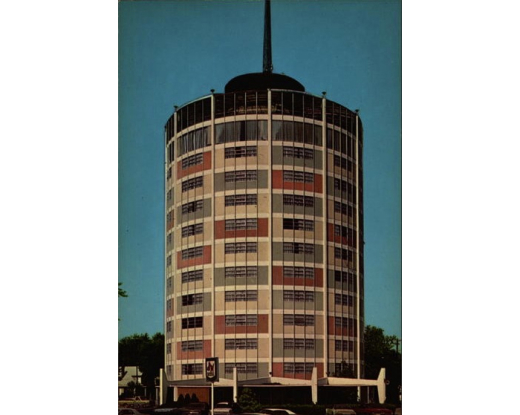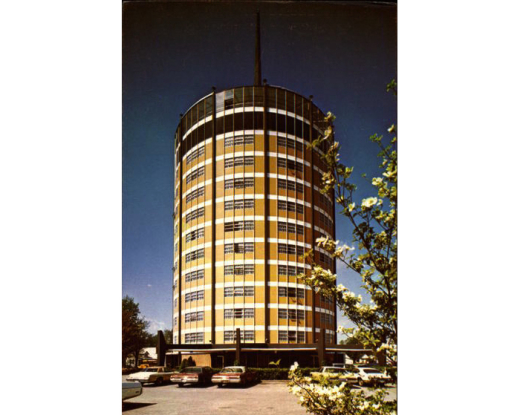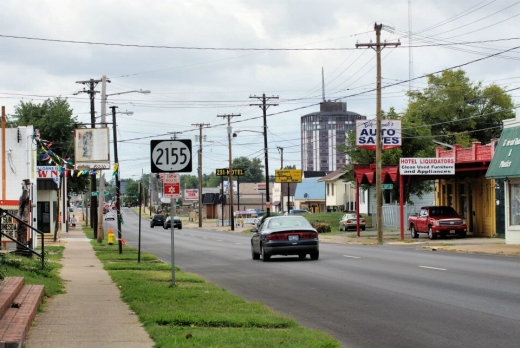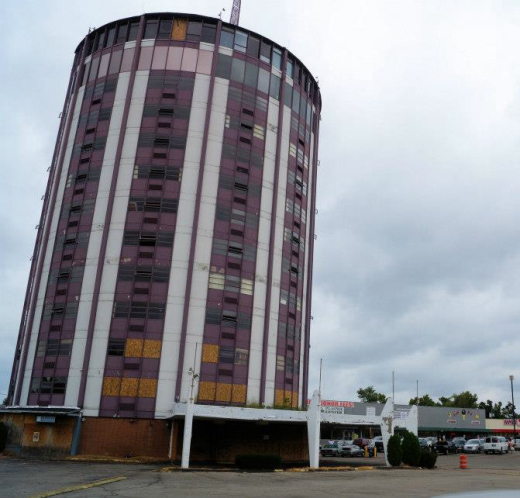By: John Lumea
It opened in November 1963 as Gabe's Motor Inn, but everybody who knows this building calls it Gabe's Tower.
With its groovy cylindrical form, its pastel-paneled façade, its 12th-floor restaurant and cocktail lounge, and its heated roof garden with swimming pool and retractable glass roof, this Owensboro, Kentucky, hotel, designed by local architect R. Ben Johnson (1921-2009) for restaurateur and local legend Gabe Fiorella, Sr. (1900-1977), was the hippest place in town in the 1960s and ‘70s.
Although Johnson always cited, as his design inspiration, Bertrand Goldberg's Marina City in Chicago, whose twin towers (1962/63) were going up and being completed at the same time, many people see a stronger visual connection to the Capitol Records Tower (1956) in Los Angeles, the first commercial building to feature a circular plan.
Today, Gabe's Tower is one of the earliest-surviving commercial cylinders in the country. Although Gabe’s Tower is structurally sound, its future is not. In August 2012, after years of neglect that have left the building looking very poorly indeed, the city initiated condemnation proceedings against the tower, with a view to demolishing it.
Urbanist and writer John Lumea, who offers this photo essay, responded by launching an effort to explore the full range of options for the tower, in hopes of seeing it redeveloped and restored as an economically vital symbol and icon of Owensboro. Lumea, who now lives in San Francisco, was born in Owensboro in 1965, less than two years after Gabe's Tower opened. So he grew up with the tower's original pastels and sees what bringing them back in the right way could mean to the economic and cultural life of the tower's neighborhood and the city as a whole.
The “Save Gabe’s” effort has attracted support from both residents and former Owensboroans who are spread out across the country, as well as the support and assistance of leaders from Docomomo US, the Recent Past Preservation Network, Preservation Kentucky, Kentucky Heritage Council, The Society for Commercial Archeology, The Los Angeles Conservancy Modern Committee, and the ICOMOS International Scientific Committee on 20th Century Heritage.
Updates
October 2019
An RFP for redevelopment of Gabe's Tower has been released. While the Mayor of Owensboro has said he "would like to see it come down," we are hoping there is a forward-thinking developer out there who can save and reuse this building. RFP deadline is November 7, 2019 has been extended to November 21, 2019.
June 2020
Sadly, we have received reports that Gabe's Tower is in the final stages of demolition.
"Wrecking ball begins razing Gabe's Tower," Messenger-Inquirer, June 9, 2020.
